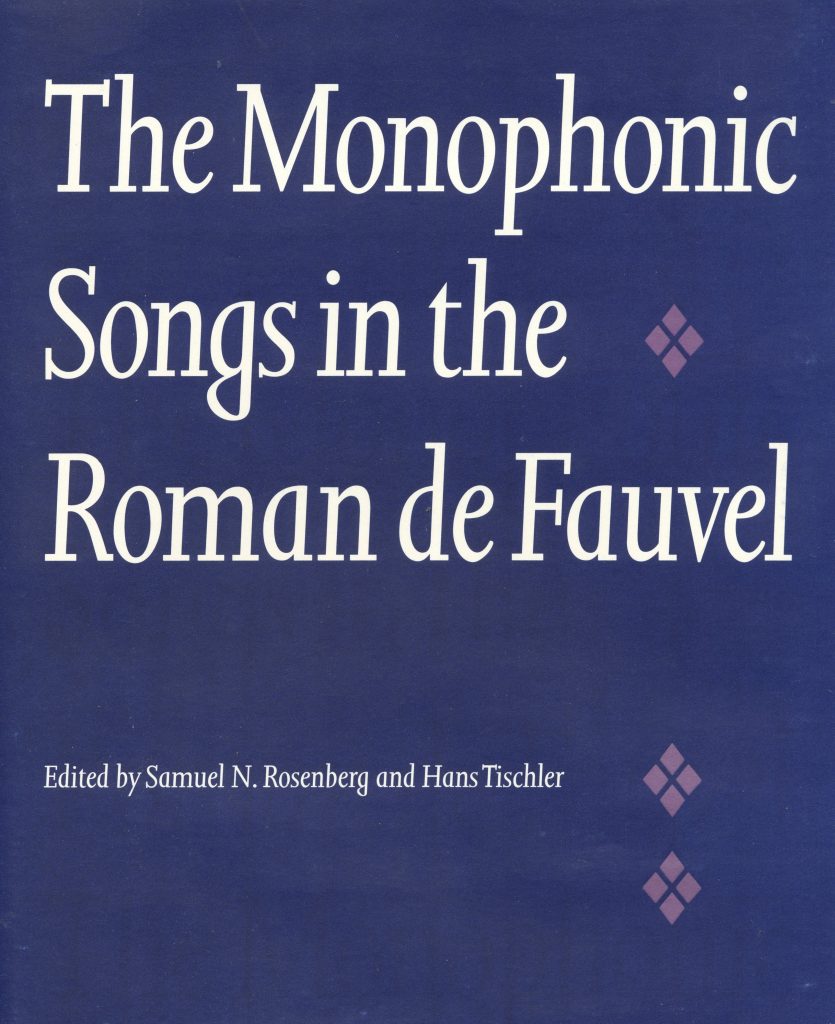
- Texts edited by Samuel N. Rosenberg
- Music edited by Hans Tischler
- Lincoln: University of Nebraska Press, 1991
- x + 171 pages
- Hardcover: ISBN 0-8032-3898-3
The Livre, or Roman, de Fauvel began as a satirical poem by Gervais du Bus in the early fourteenth century. Its allegorizing narrative develops around the figure of the horse Fauvel, a symbol of the combined vices of Flaterie, Avarice, Vilanie, Varieté, Envie, and Lascheté.
Critical of the immorality and corruption rampant in both the secular and the ecclesiastical society of the time, the Roman belongs to a tradition of allegorical literature that voices indignation over the mean state of the world and its institutions. Comprising two books, the poem survives in multiple manuscripts, most notably one of about 1318—a version of the Fauvel revised and expanded by a writer who, in the opening lines, names himself as Chaillou de Pestain. The manuscript is one of the most beautiful of its period, including numerous illuminations that offer a striking gloss of the text. (See the link, below, to this manuscript.)
The most remarkable distinction of the new version lies in its incorporation of a great number of lyric pieces. These are thematically linked to their immediate context and serve either as a kind of external commentary on the story as songs sung by or on behalf of characters and thus folded into the action. What makes the interpolated songs, chants, and polyphonic compositions particularly striking is, first, that almost all their texts are presented with music and, second, that they constitute a highly heterogeneous corpus, including compositions both monophonic and polyphonic, both French and Latin, both secular and liturgical, and texts and/or melodies apparently created by Chaillou as well as texts and/or melodies apparently drawn, with varying degrees of redactional freedom, from external sources extending back over more than a century and a quarter. — This description has been condensed from the Introduction.
See the early 14th-century Old French manuscript
The Chaillou de Pestain manuscript of Le Roman de Fauvel (c. 1318) is in the Bibliothèque nationale de France, fonds français 146, and it may be seen at https://gallica.bnf.fr/ark:/12148/btv1b8454675g .
